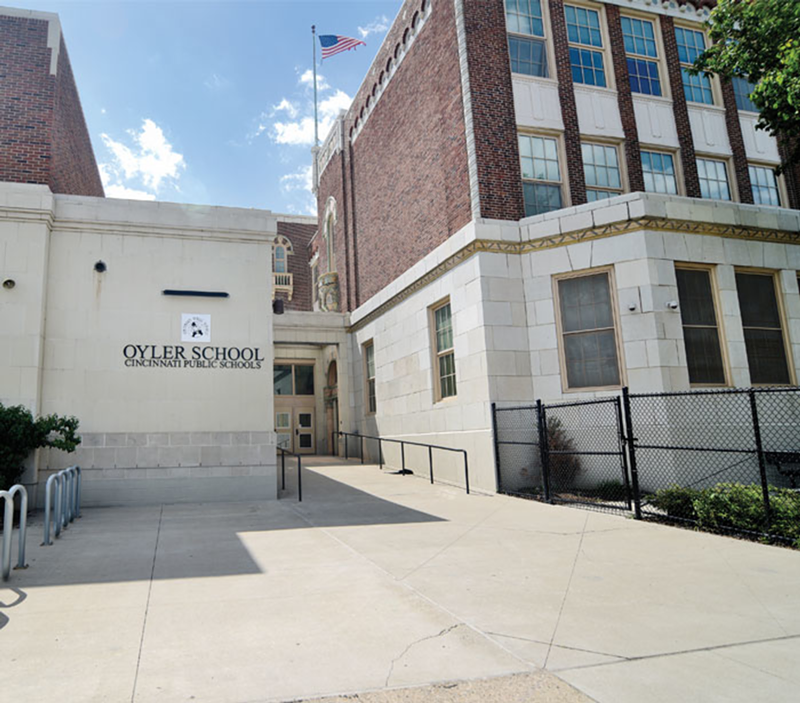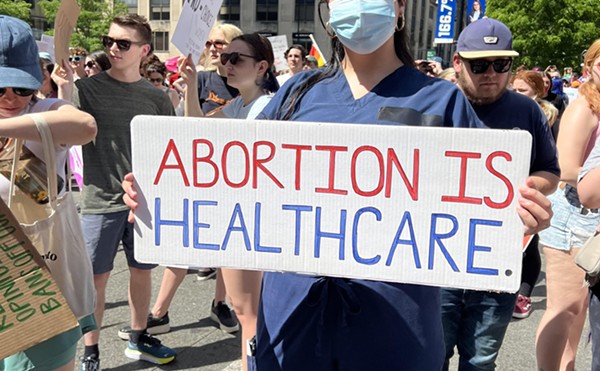
A group calling itself the Cincinnati Educational Justice Coalition packed 60 people into a small conference room at the West End YMCA June 18 to discuss solutions to a long-standing issue — the stubborn gap separating low-income Cincinnati students from their more well-off peers.
The coalition started in late 2013 and is made up of Cincinnati educators, administrators, teacher union officials and others. Many in the group say systemic factors and internal inequalities have contributed to the city’s education achievement gap, and that public schools need more support as they address those problems. Meanwhile, the group is pushing back against another proposed effort to address school inequality: spending millions to expand charter schools in Cincinnati.
The group says support for programs like Cincinnati Public Schools’ community learning center model, not more charter schools, will help address educational inequality.
“We’re really excited about this coalition, because it’s about having great schools in the city — great public schools,” said Marcia Futel, a board member of Parents for Public Schools of Greater Cincinnati. “We have to have public schools, because that’s the only way education can be a great equalizer.”
The city certainly needs that equalizer. Like many urban public school districts, Cincinnati Public Schools was hit hard by decades of declining population and flight from the city’s urban core, which decimated the tax base that generally funds public schools. In a series of rulings in the late 1990s, the Ohio Supreme Court found the state’s school-funding system unconstitutional, mainly citing the plight of large urban districts like Cincinnati’s. The court ordered big changes. Cincinnati responded with a $1 billion drive to reinvest in its schools, leading to new buildings and a number of new approaches, including the much-vaunted community learning center model adopted in 2001.
But challenges remain.
Fifty percent of children in the city live in poverty. Only Detroit is worse. And a recent report by the Strive Partnership (“Lessons Learned,” CityBeat issue of May 20) shows the region lags when it comes to providing those low-income students with equitable educational opportunities.
Only 72 percent of low-income black students in the Greater Cincinnati area passed 3rd grade reading proficiency tests, compared to 83 percent of white low-income students, the report says. The disparity remains when income isn’t an issue, as well. Eighty-four percent of non-low-income black students passed the tests; 95 percent of white students did.
To make matters worse, some teachers say schools serving economically disadvantaged students don’t get everything they need, while others serving better-off students have more resources.
Teacher and CEJC member Christina McDonough noticed this disparity when she left Pleasant Ridge Montessori to teach at Dater Montessori.
About 45 percent of Dater’s students come from low-income families. Sixty-two percent of Pleasant Ridge’s students do.
“At Dater, we have a full-time library technology person, we have a research specialist, we have a psychologist five days a week,” McDonough says.
The school also has specialty programs like the Suzuki Violin music program. Meanwhile, Pleasant Ridge Montessori doesn’t have a librarian or technology specialist.
Better-staffed Dater has 671 students to Pleasant Ridge’s 563. But only 300 of Dater’s students are low-income, while about 350 of Pleasant Ridge’s are.
“It’s like, ‘Well, they have more children that are economically disadvantaged, but they don’t have a librarian,’ ” McDonough says. “They only have a psychologist two and a half days a week. So, you can see the inequity.”
Those are the kinds of inequalities that CEJC looks to address. But the group’s efforts to support traditional public schools come as others propose a different, controversial solution to educational inequality: more charter schools.
Business leaders and philanthropists have moved to create an education accelerator that would spend $25 million to increase the number of spots available in high-performing schools from the current 5,500 seats to 20,000 in the next decade. The initiative was created by the Cincinnati Business Committee, the Farmer family (which owns the Mason-based Cintas corporation) and the Haile U.S. Bank Foundation. Cincinnati Public Schools, leaders of a number of charter schools and the Catholic Archdiocese of Cincinnati, which runs a number of private catholic schools in the city, are also involved.
Much of the accelorator’s money — about $15 million — would likely end up creating new charter schools, though some of them would partner with CPS. Charter schools are privately run schools funded with public money that would have otherwise gone to public schools in a district.
Charter schools, either for-or nonprofit, are subject to laxer state regulations and performance standards, but must be overseen by a sponsoring organization. CPS sponsors several charters. Of the 50,000 potential students in the CPS district, about 8,000 attend charters every year.
Ohio set up its charter school system in 1997 as a way to address low performance in urban public schools. Boosters say competition for students makes schools better. But in recent years, Ohio charters have struggled with accountability and performance problems. Even conservative state officials who are generally in favor of charters, including State Auditor Dave Yost, have acknowledged there are problems with the state’s system.
In some cities, these schools have seen success, outperforming public schools. But in others, including Cincinnati, charters have underperformed.
CPS received a “C” on the Ohio Department of Education’s 2014 performance index with a 73-percent rating. That index measures how many students pass state standardized tests. Meanwhile, a CityBeat analysis finds that Cincinnati charters for which data is available score what would be a “D” grade, with an average just 64 percent on the index.
There are also high-performing charters in Cincinnati, including ones like Winton Hills Academy, which serves predominantly low-income students. That school, and six other charter and public schools like it, have been identified by the education accelerator as worth emulating.
But CEJC disagrees that more charters are the answer. They say public schools already have programs in place that can help address the deep poverty underlying the achievement gap and those programs need more support.
“Poverty creates so many different kinds of problems and challenges,” CPS Board Member Eve Bolton says. “We know that when our children are experiencing hunger, they’re not going to be able to learn as much in the classroom.”
Advocates say the way to address those challenges is to support and expand community learning centers.
“I think a lot of people in Cincinnati don’t even realize they have this outstanding model for education right here in your city,” says CEJC member and Ohio Federation of Teachers President Melissa Cropper. “The community learning center model makes sure that children are fed, that they have glasses, makes sure that their mental health, social and emotional learning needs are taken care of.”
CPS helped pioneer the community learning center model, an approach to community-centered schools that provides social services, counseling, community events and other neighborhood needs beyond education. Cincinnati’s 40 community learning centers have received national attention. Oyler Community Learning Center in Lower Price Hill, for example, is the subject of a recently released documentary chronicling the school’s transformation. The city’s community learning centers have brought high-level officials from New York City and other major urban areas to see the concept at work here.
Bolton says the great strength of the community learning center is its ability to engage the community surrounding a school to help mitigate the effects of poverty and empower parents to make decisions about students’ education. That, she says, is something only a public school can do.
“There is a significant portion of our population — the parents, the families, the neighbors of the children we serve — who feel like they cannot advocate for their children,” Bolton says. “The community has to tell us what they want for their children. I’m not interested in too many other people downtown or elsewhere telling me what they want.” ©





